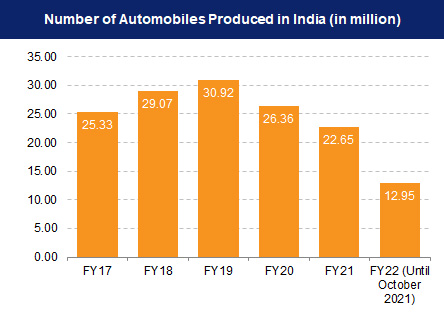After the pandemic that caused a halt in most global industrial operations and a slackening of vehicle sales, the automotive industry is slowly rebounding. Many carmakers are now focusing on new innovations that use advanced technology solutions such as connected cars, sensors and electrification.
These technologies could reshape the automotive market significantly and expand revenue pools by up to 30 percent or $1.5 trillion in 2030.
Fuel Cell Electric Vehicles (FCEVs)
The automotive industry is a vital part of the US economy, with cutting-edge factories and major infrastructure to export completed vehicles to points across America and around the world. It supports 9.6 million American jobs, 5 percent of the private sector workforce.
The future of the industry looks bright. EV sales are growing fast, and many consumers are looking at replacing old “box on wheels” technologies with smarter alternatives. This is driving demand for new connected and intelligent car features and refocusing the focus of auto parts companies.
In terms of future trends, the automotive industry is also focused on developing new fuel cell electric vehicles (FCEVs). FCEVs are very similar to regular battery-powered EVs, but they run on hydrogen instead of electricity. Honda, Hyundai and Toyota all have practical FCEVs on the road today, though most are only available in California due to the state’s embrace of green technology. Until the cost of producing the fuel cells goes down, these cars will remain more expensive than their ICE counterparts. However, they are the most environmentally friendly option for personal transportation.
Safety Features
There is no doubt that car safety features are a top priority for consumers. This includes everything from seat belts to antilock brakes. Many of these are now standard in new cars, while others like blind-spot monitoring and lane-keeping assist were cutting edge technology just a few years ago.
As we continue to advance with auto technology, it’s important that the industry prioritizes safety features as well. After all, the smallest mistake while driving can have devastating consequences for both passengers and pedestrians.
For example, a rearview camera is an essential feature that helps drivers avoid hitting children or pets when pulling out of parking spaces. Another great option is a surround-view camera that provides a full view of the vehicle so drivers can easily detect obstacles around them.
Despite these advances, there are still some challenges facing the automotive industry. High interest rates, supply chain disruptions and fears of a recession have all contributed to slowing growth. These challenges will require the industry to embrace a more collaborative business model that involves partnerships and open, scalable ecosystems.
Comfort and Convenience
Aside from safety, comfort is another big focus. This includes personalised in-vehicle experiences, customised infotainment systems, voice-enabled services, and enhanced display screens that shift from touch controls to haptic feedback. Moreover, there is also talk of integrating virtual reality and augmented reality in vehicles for passengers to enjoy.
In addition to these technologies, manufacturers are focusing on making vehicles more fuel-efficient and comfortable. These factors are expected to drive the automotive industry’s growth.
However, one of the major barriers that the industry is facing is a lack of skills. As many traditional car manufacturing jobs become obsolete, the industry must invest in tech-enabled roles that can deliver a range of new software-defined features.
The global automotive industry remains in a state of recovery. Consumers have boosted their savings, which has led to an increase in demand for cars and related products. This has resulted in a growth of aftermarket sales, with revenue up by 2% in 2022 and demand up in most regions, except for tires and spare parts. Moreover, there has been an improvement in vehicle value and an increase in car chemicals.
Connected Cars
Digitalization has changed automotive engineering, and now car manufacturers are focusing on optimizing their vehicles through connectivity services. These connected cars are able to share information with traffic infrastructure, other vehicles and even with the vehicle’s own internal systems.
As a result of this, new-car buyers demand that their vehicle be upgradable and can run on the latest software. Consequently, classic carmakers are increasingly focusing on developing their own software and are competing against technology pioneers like Apple, who are re-entering the automotive industry.
However, consumers are also concerned about data privacy and hacking. Therefore, it is essential that car manufacturer’s manage this challenge successfully. This is especially true as they have to be able to guarantee that data is used solely for the intended purpose and is protected from hackers. A poor handling of this issue could damage the reputation of established brands. It can also lead to the loss of trust among new-car buyers.
Shift towards Shared Mobility
Automakers are shifting away from selling vehicles directly to consumers and instead focusing on providing shared mobility services. This is not only a response to consumer demand but also helps reduce the burden of vehicle ownership and maintenance costs.
EVs are expected to dominate the market over the next few years, which will require a major shift in infrastructure for charging stations. This is driving investment in new technology by both existing and startup companies.
While this can benefit the automotive industry in terms of growth, it will also put pressure on companies to ensure that their supply chains are up to speed with these innovations. Many auto makers rely on complex global supply chains, which will need to be monitored carefully with the growing focus on ESG (environmental, social, and governance) initiatives.
The COVID-19 pandemic had a severe impact on the automotive industry by disrupting production and sales, with many manufacturers forced to scale back their operations. However, the demand is gradually returning to pre-pandemic levels and the industry can look forward to a positive year ahead.
